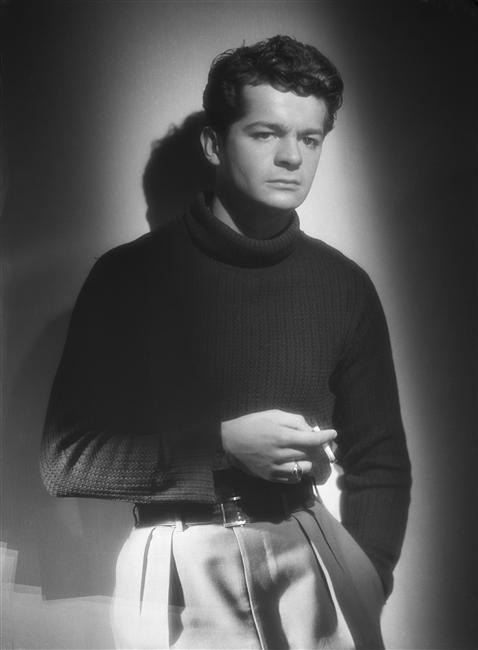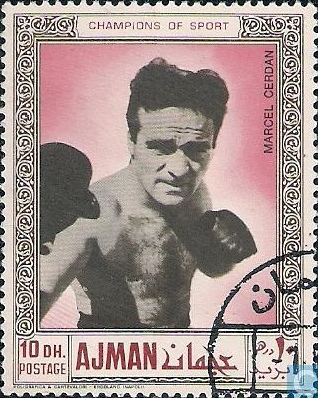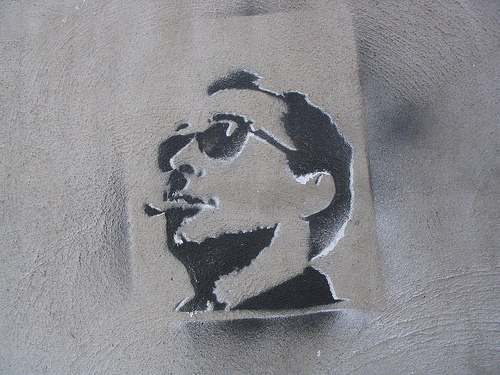|
Rue Du Faubourg Saint-Denis
The Rue du Faubourg-Saint-Denis () is a street in the 10th arrondissement of Paris. It crosses the arrondissement from north to south, linking the Porte Saint-Denis to La Chapelle Métro station and passing the Gare du Nord. History The Rue du Faubourg-Saint-Denis owes its name to the fact that it is an extension of the Rue Saint-Denis to the faubourg or area outside Paris's walls (as marked today by the Porte Saint-Denis). It also marked the eastern boundary of the enclos (later prison) Saint-Lazare. Historically, this street was an extremely upper-class area, occupied by jewellers and textile merchants, since it was part of the King's processional route to the Basilica of Saint-Denis. After the French Revolution, the street briefly bore the name 'Rue du Faubourg Franciade' in 1793 (with the portion between the Rue Saint-Laurent and the Place de la Chapelle being renamed the Rue du Faubourg Saint-Lazare and the Rue du Faubourg de Gloire). Length * From the to the Boulev ... [...More Info...] [...Related Items...] OR: [Wikipedia] [Google] [Baidu] |
10th Arrondissement Of Paris
The 10th arrondissement of Paris (''Xe arrondissement'') is one of the 20 Arrondissements of Paris, arrondissements of the capital city of France. In spoken French, the arrondissement is referred to as ''le dixième'' (; "the tenth", formally ''le dixième arrondissement de Paris''). In 2020, it had a population of 83,459. The arrondissement, called Entrepôt (warehouse), is situated on the Rive Droite, right bank of the Seine, River Seine. It contains two of the seven large mainline List of Paris railway stations, railway stations of Paris: the Gare du Nord and the Gare de l'Est. Built during the 19th century, these two Terminal station, termini are among the List of busiest railway stations in Europe, busiest in Europe. The 10th arrondissement also contains a large portion of the Canal Saint-Martin, linking the northeastern parts of Paris with the Seine. The current mayor of the 10th arrondissement is Alexandra Cordebard since 2017. Geography The land area of the arrondisse ... [...More Info...] [...Related Items...] OR: [Wikipedia] [Google] [Baidu] |
Gustave Caillebotte
Gustave Caillebotte (; 19 August 1848 – 21 February 1894) was a French painter who was a member and patron of the Impressionists, although he painted in a more Realism (arts), realistic manner than many others in the group. Caillebotte was known for his early interest in photography as an art form. Early life Gustave Caillebotte was born on 19 August 1848 to an upper-class Parisian family living in the rue du Faubourg-Saint-Denis. His father, Martial Caillebotte (1799–1874), was the inheritor of the family's military textile business and was also a judge at the Tribunal de commerce de Paris, Tribunal de commerce de la Seine. Caillebotte's father was twice widowed before marrying Caillebotte's mother, Céleste Daufresne (1819–1878), who had two more sons after Gustave: René (1851–1876) and Martial Caillebotte, Martial (1853–1910). Caillebotte earned a law degree in 1868 and a license to practice law in 1870, and he also was an engineer. Shortly after his education, h ... [...More Info...] [...Related Items...] OR: [Wikipedia] [Google] [Baidu] |
Serge Reggiani
Serge Reggiani (born Sergio Reggiani; 2 May 1922 – 23 July 2004) was an Italian-French actor and singer. He was born in Reggio Emilia, Italy, and moved to France with his parents at the age of eight. After studying acting at the Conservatoire des arts cinématographiques, he was discovered by Jean Cocteau and appeared in the wartime production of '' Les Parents terribles''. He then left Paris to join the French Resistance. His first feature film was ''Les portes de la nuit'' (" Gates of the Night"), released in 1946. He went on to perform in 80 films in total, including '' Casque d'or'', ''Les Misérables'' (1958), '' Tutti a casa'', '' Le Doulos'', '' Il Gattopardo'', '' La terrazza'', '' The Pianist'' (1998). Reggiani also triumphed in the theatre in 1959 with his performance in Jean-Paul Sartre's play '' Les Séquestrés d'Altona''. In 1961, Reggiani co-starred with Paul Newman and Sidney Poitier in the film '' Paris Blues'', filmed on location in Paris. In 1965, at t ... [...More Info...] [...Related Items...] OR: [Wikipedia] [Google] [Baidu] |
Marcel Cerdan
Marcellin "Marcel" Cerdan (; 22 July 1916 – 28 October 1949) was a French professional boxer and world middleweight champion who was considered by many boxing experts and fans to be France's greatest boxer, and beyond to be one of the best to have learned his craft in Africa. Nicknamed "the Moroccan bomber" or "the man with hands of clay", his talent led him to France in 1938 where he became French champion three times and then European champion in the welterweight category. His life was marked by his sporting achievements, social lifestyle and, ultimately, tragedy, being killed in an airplane crash. Early life Marcellin Cerdan was born at 9:00pm on 22 July 1916 in the "Little Paris" neighbourhood of Sidi Bel Abbès in Algeria. He was the fourth son of Antonio Cerdán, a day labourer, and Asunción Cascales, '' pied-noirs'' of Spanish origin. Boxing career Cerdan began boxing professionally on 4 November 1934 in Meknes, Morocco, beating Marcel Bucchianeri by a decision ... [...More Info...] [...Related Items...] OR: [Wikipedia] [Google] [Baidu] |
Mille-feuilles
A (; ),The name is also written as and . also known by the names Napoleon in North America, vanilla slice in the United Kingdom, and custard slice, is a French dessert made of puff pastry layered with pastry cream. Its modern form was influenced by improvements made by Marie-Antoine Carême. Traditionally, a is made up of three layers of puff pastry (), alternating with two layers of pastry cream (). The top pastry layer is finished in various ways: sometimes it is topped with whipped cream, or it may be dusted with icing sugar, cocoa, pastry crumbs, or sliced almonds. It may also be glazed with icing or fondant alone, or in alternating white (icing) and brown (chocolate) or other colored icing stripes, and combed to create a marbled effect. History According to the ''Oxford Companion to Sugar and Sweets'', recipes from 17th century French and 18th century English cookbooks are a precursor to layer cakes. The earliest mention of the name itself appears in 1733 in ... [...More Info...] [...Related Items...] OR: [Wikipedia] [Google] [Baidu] |
Traiteur (culinary Profession)
A ''traiteur'' (; ) is a French food-seller, whose places of business were arguably the precursors of the modern restaurant.Jim Chevallier, ''A History of the Food of Paris: From Roast Mammoth to Steak Frites'', 2018, , pp. 75–80 Prior to the late 18th century, diners who wished to "dine out" could dine at a ''traiteur'''s, or order meals to go. The cooks and caterers guild – informally known as the ''traiteurs'' – progressively claimed the right to make any sophisticated meals, leaving inns and taverns to mainly make roast or grilled meat. As of the late seventeenth century, many offered a '' table d'hôte'', a meal offered at a set price with no choice of dishes. However both cabarets and ''traiteurs'' could also offer individual choice of dishes, despite claims to the contrary. In modern France, the word often refers to a caterer. ''Traiteur'' is an agent noun formed from the verb ''traiter'' ('treat'), which literally refers to the action of "treating" someone to someth ... [...More Info...] [...Related Items...] OR: [Wikipedia] [Google] [Baidu] |
Profiteroles
A profiterole (), ''chou à la crème'' (), also known alternatively as a cream puff (US), is a filled French choux pastry ball with a typically sweet and moist filling of whipped cream, custard, pastry cream, or ice cream. The puffs may be embellished or left plain or garnished with chocolate sauce, caramel, or a dusting of powdered sugar. Savory profiterole are also made, filled with pureed meats, cheese, and so on. These were formerly common garnishes for soups. The various names may be associated with particular variants of filling or sauce in different places. Preparation Choux pastry dough is piped through a pastry bag or dropped with a pair of spoons into small balls and baked to form largely hollow puffs. After cooling, the baked profiteroles are injected with filling using a pastry bag and narrow piping tip, or by slicing off the top, filling them, and reassembling. For sweet profiteroles, additional glazes or decorations may then be added. Presentation The m ... [...More Info...] [...Related Items...] OR: [Wikipedia] [Google] [Baidu] |
Bouillon Julien
''Bouillon Julien'', formerly ''Julien'', is a ''brasserie''-type restaurant in the 10th arrondissement of Paris, France. It was made an official Historical Monument for its Art Nouveau style. History In 1787, the building hosted the restaurant ''Le Cheval Blanc'', became one of the first '' café-concerts''. The current building was erected in 1901–1902 by architect Édouard Fournier. The ''Art Nouveau'' restaurant was decorated by Louis Trézel, Armand Ségau and Hippolyte Boulenger, and opened in 1903 as ''Gandon-Fournier''. In 1924, the establishment was handed over to Julien Barbarin. Several signs representing peacocks were made by Armand Ségaud, whereas the mahogany counter is attributed to cabinetmaker Louis Majorelle. Louis Trézel depicted four women on several sintered-glass panels inspired by Alfons Muchas's iconography. The tiled floor, which depicts a wild aquilegia and daisy meadow, was crafted in Hippolyte Boulenger's pottery works in Choisy-le-Roi, ... [...More Info...] [...Related Items...] OR: [Wikipedia] [Google] [Baidu] |
Bouillon (restaurant)
In France, a bouillon () is a traditional (late 19th or early 20th century), spacious restaurant that usually serves traditional French cuisine, in particular a Bouillon (broth), bouillon, which has provided the name for this class of restaurants. When invented, the concept was to serve good quality food quickly, at an affordable price. By repeating the same formula across multiple sites, the founder also effectively invented the chain restaurant; however, the wider idea had no influence (beyond other bouillons) and ultimately it was American chains which revived the idea in France.Jim Chevallier, ''A History of the Food of Paris: From Roast Mammoth to Steak Frites'', 2018, , pp. 96, 115 Today, the buildings of some bouillons are listed historical monuments. History In 1838, a Dutch company began to sell bouillon in uniform outlets. These first "Bouillons Hollandais" did not survive, but in 1854 a French butcher, Adolphe-Baptiste Duval (1811-1870), revived the idea (and is t ... [...More Info...] [...Related Items...] OR: [Wikipedia] [Google] [Baidu] |
Une Femme Est Une Femme
Une is a municipality and town of Colombia in the Eastern Province, part of the department of Cundinamarca. The urban centre is located at an altitude of at a distance of from the capital Bogotá. The municipality borders Chipaque in the north, Cáqueza and Fosca in the east, Fosca and Gutiérrez in the south, and Bogotá in the west. Etymology The name Une is derived from Chibcha and means "Drop it" or "mud".''une'' - Muysccubun Dictionary Geology and geography Une is situated in the Eastern Ranges of the Colombian . In the municipality outcrops the |
Jean-Luc Godard
Jean-Luc Godard ( , ; ; 3 December 193013 September 2022) was a French and Swiss film director, screenwriter, and film critic. He rose to prominence as a pioneer of the French New Wave film movement of the 1960s, alongside such filmmakers as François Truffaut, Agnès Varda, Éric Rohmer and Jacques Demy. He was arguably the most influential French filmmaker of the post-war era. According to AllMovie, his work "revolutionized the motion picture form" through its experimentation with narrative, continuity, sound, and camerawork. During his early career as a film critic for '' Cahiers du Cinéma'', Godard criticized mainstream French cinema's "Tradition of Quality" and championed Hollywood directors like Alfred Hitchcock and Howard Hawks. In response, he and like-minded critics began to make their own films, challenging the conventions of traditional Hollywood in addition to French cinema. Godard first received global acclaim for '' Breathless'' (1960), a milestone in t ... [...More Info...] [...Related Items...] OR: [Wikipedia] [Google] [Baidu] |




